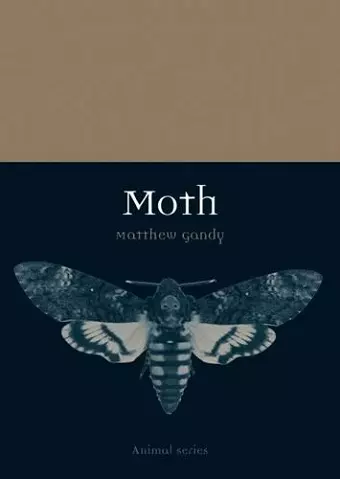Moth
Format:Paperback
Publisher:Reaktion Books
Published:1st May '16
Currently unavailable, our supplier has not provided us a restock date

Unlike their gaudy day-flying cousins, moths seem to reside in the shadows as denizens of the night, circling around street lights or caught momentarily in the glare of car headlights on a country lane. There are, however, many more species of day-flying moths than there are of butterflies, and as for colours and patterns, many moths rival or even exceed butterflies in the dazzling range of their markings.
The study of moths formed an integral part of early natural history and many thousands of drawings, paintings and physical specimens remain in museum collections. In recent years there has been a renewed surge of interest in moths facilitated by advances in digital photography, the Web-based dissemination of scientific expertise and new cartographic projects that enable direct collaboration between amateur experts and scientifically framed research projects. The rich history of vernacular names speaks to the significant place of moths in early cultures of nature: names such as the Merveille du Jour, the Green-brindled Crescent and the Clifden Nonpareil evoke a sense of wonder that connects disparate fields such as folklore, the history of place and early scientific texts.
To read and download some sample pages from the book please click here.
this book is indeed very different: beautifully written, full of surprises, gloriously illustrated in flowing mature prose and colourful illustration. Yes, the researcher will find many familiar issues being discussed (even then I enjoyed being reminded about much of what I once knew well), but I doubt that he/she will have gleaned the insights that Matthew Gandy has revealed linking moths and butterflies to the arts and sciences, all too often regarded as tenuous but here exposed as firm, intricate, anastomosing webs of connections the reflections on the perspectives of moths in distinct cultures are in themselves fascinating and I found myself acquiring new views . . . This is one of those rare books that should galvanise the next generation to learn and enjoy, to revere and to protect what we still have of smaller organisms, the living gems on this amazing planet. * Entomologists Gazette *
Moth lavishly illustrated with many gorgeous plates and these are worth the price on their own . . . The author is a geographer with very wide interests and he is clearly very good at researching his subjects and rooting out obscure and exciting things to include . . . I guarantee that everyone will find information new to them and of real interest. Everyone will enjoy the extraordinary plates! I thoroughly recommend this to anyone with an interest in moths and expect to dip back into it many times in the future. * Atropos *
Moth is part of a series of a new kind of animal history, so one expects a section on natural history, followed by another on how humans have interpreted moths in art, music, literature, etc. This volume breaks that pattern with a long section on the naming of moths and highlights the history, controversies, and occasional humor of taxonomic work. Recommended. * Choice *
Matthew Gandys book focuses on the moth: long associated with darkness and the gothic imagination, yet significant in a myriad of other ways, from silk production to sensitive indicators of environmental change . . . Both Animal series books are extremely well illustrated, bursting with historical detail and engagingly written. These exceptional accounts of the cultural and natural history of beetles and moths will undoubtedly change the way readers think about their relationship with these captivating insects. * European Journal of Entomology *
ISBN: 9781780235851
Dimensions: unknown
Weight: unknown
240 pages